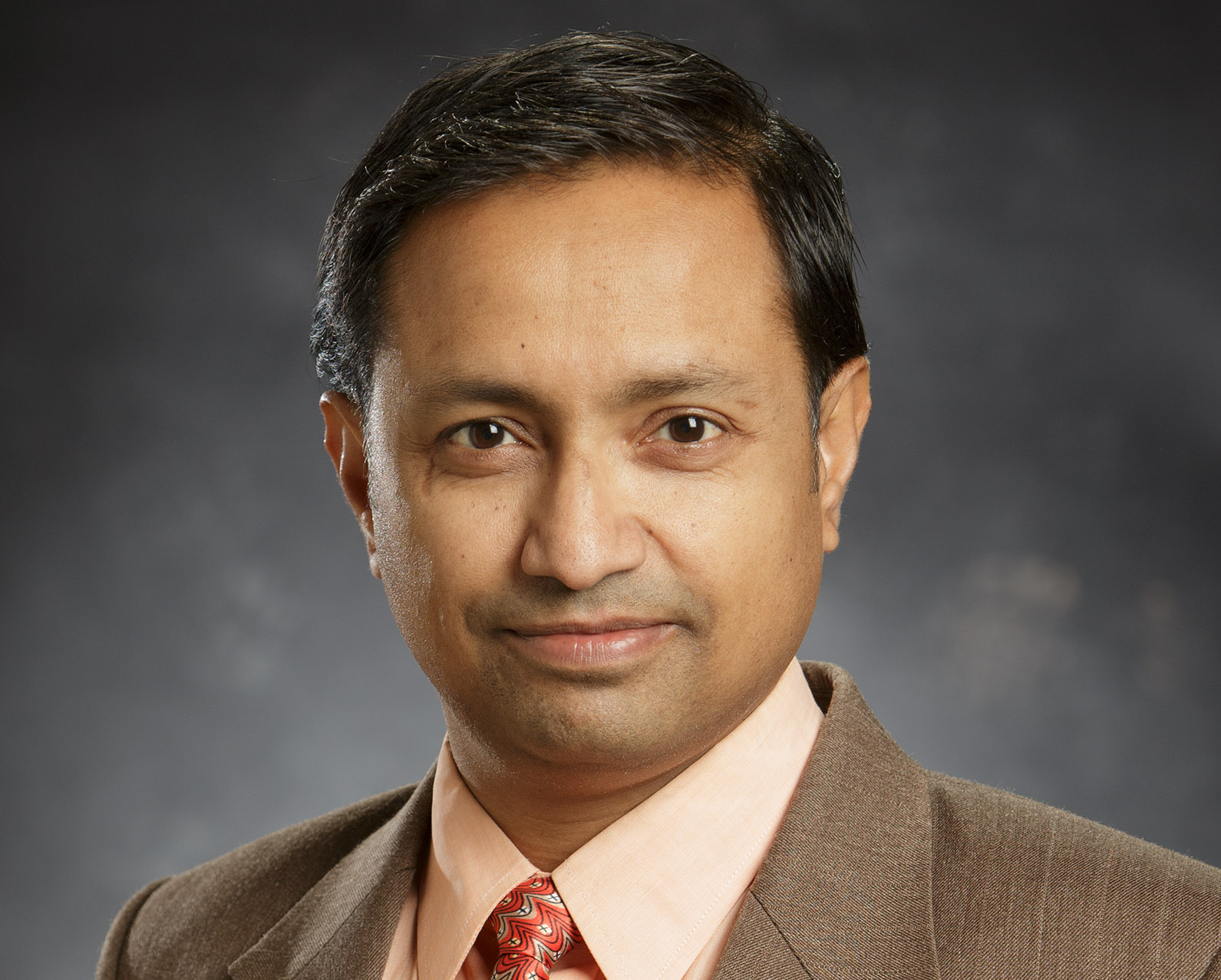Sundar Madihally, Ph.D.
Professor
Education
Research Fellow, Surgical Services
Massachusetts General Hospital, 2001
Ph.D., Chemical Engineering
Wayne State University, 1998
M. S., Chemical Engineering
Wayne State University, 1996
B. S., Chemical Engineering
Bangalore University, 1992
Professional Experience
ABET Program Evaluator Candidate Training Mentor, 2024 - Present
Undergraduate Program Coordinator, Chemical Engineering
Oklahoma State University, 2022 - Present
ABET Accreditation Coordinator, Chemical Engineering
Oklahoma State University, 2016 - Present
Student Chemical Reaction Powered Car Contest, OSU Student Chapter Faculty Advisor, Chemical Engineering
Oklahoma State University, 2005 - Present
Graduate Program Coordinator, New MS Petroleum Engineering
Oklahoma State University, 2015 - 2016
Graduate Program Coordinator, Chemical Engineering
Oklahoma State University, 2011 - 2016
Founding Advisor for the Chemical Engineering Graduate Student Association (ChEGSA), Chemical Engineering
Oklahoma State University, 2011 - 2016
AIChE, OSU Student Chapter Faculty Advisor, Chemical Engineering
Oklahoma State University, 2005 - 2011
Indian Student Association, OSU Student Chapter Faculty Advisor
Chemical Engineering
Oklahoma State University, 2003 - 2008
Visiting Assistant Professor, Biomedical Engineering
The State University of New Jersey, 2001
Professional Honors and Affiliations
George Lappin Program Committee Service Award, National AIChE, 2020
Distinguished Alumni Award, M.S.
Ramaiah Institute of Technology, Bangalore, India, 2019
Graduate Teacher of the Year Award, School of Chemical Engineering
Oklahoma State University, 2012, 2015 and 2016
National Outstanding Student Chapter Advisor of the Year, AIChE, 2011
Advisor of the Year Award, CEAT
Oklahoma State University, 2011
Biomaterials Journal International Editorial Board Member, 2008 - 2011
Teacher of the Year Award, School of Chemical Engineering
Oklahoma State University, 2006
Student Organization Advisor of the Year Award, School of Chemical Engineering
Oklahoma State University, 2005
Halliburton Excellent Young Teacher Award, CEAT
Oklahoma State University, 2005
Major Areas of Interest
Molecular Bioengineering: We are interested in understanding the mechanisms at the molecular level that trigger cellular processes in stem cell differentiation and proliferation, growth inhibition using various engineering tools, and medical science.
Recent Research Activities
Biodegradable Scaffold Synthesis: We focus on innovative methods of dispersing polymeric systems without chemical reactions to generating scaffolds and injectable hydrogels from blends of natural and synthetic polymers. We have formed emulsions and blends of synthetic and natural polymers using unique solvents. We form co-axial and tri-axial fibers to obtain reinforced composites. We also encapsulate various stimulants with the focus of controlled release locally to create heterogeneous microenvironments required in promoting tissue regeneration or inhibiting growth of cancer cells. We also use bioprinting to print scaffolds with cells and evaluate the combination effect on cell function. We perform a wide variety of mechanical tests including tensile, compression, cyclical, stress relaxation testing under physiological conditions and evaluate various mechanical properties.
Stem Cell Based Tissue Regeneration: With the advent of genetically inducing pluripotency in mature cells (called induced pluripotent stem cells), we explore differentiating adult cells by controlling the scaffold architecture and signaling. We utilize adult stem cells from different tissues such as bone marrow, cord blood and adipose tissue. We evaluate the regeneration patterns and compare how stem cells would perform at two levels a) microscale and b) nanoscale using novel technologies. We use anisotropic injectable hydrogels that can be used with minimally invasive surgical procedure.
Bioreactor Design: We are interested in designing and developing bioreactors for regenerating tissues using the tools and governing equations. We use a set of integrated tools: i) computational fluid dynamic (CFD) software such as COMSOL to understand the effect of flow configurations on fluid distribution through the porous structure, ii) different scaffold preparations, and iii) cell culture experiments in bioreactors with specifications identical to simulation. We also combine residence time distribution analysis with parametric models to calculate the outlet oxygen concentration. We assess the effect of changing porous architecture due to cell growth and deposited matrix elements on fluid distribution, shear stresses and pressure drop. We measure diffusivities in porous structures, and account for changes in dimensions of the scaffolds using mechanical properties.


